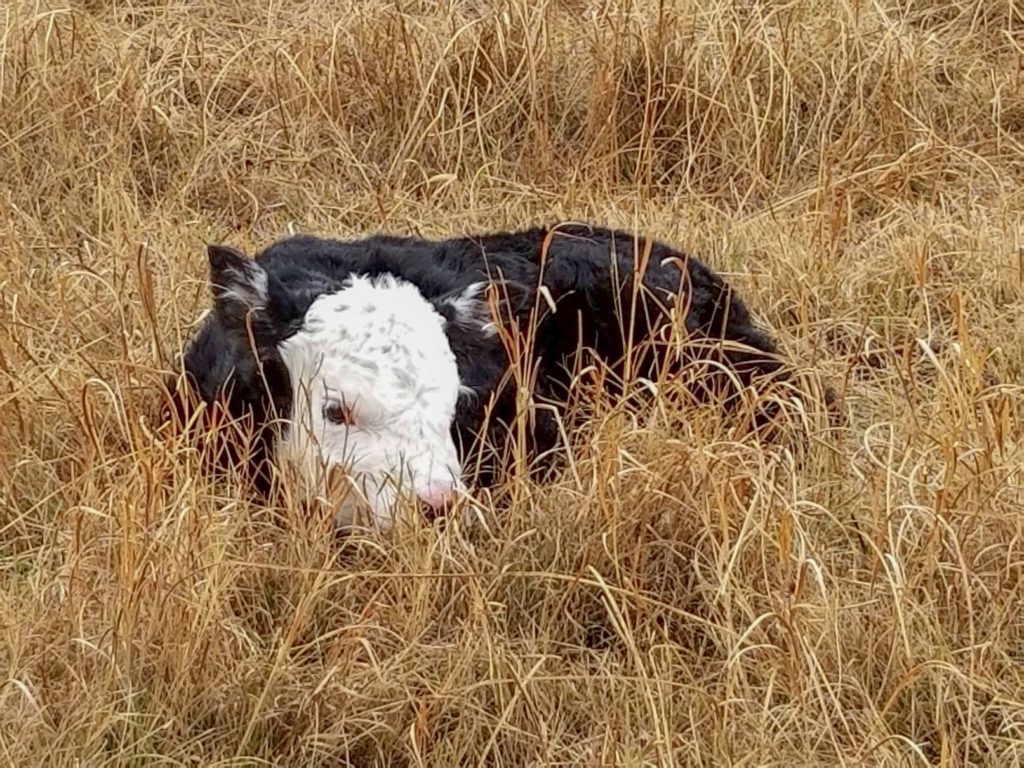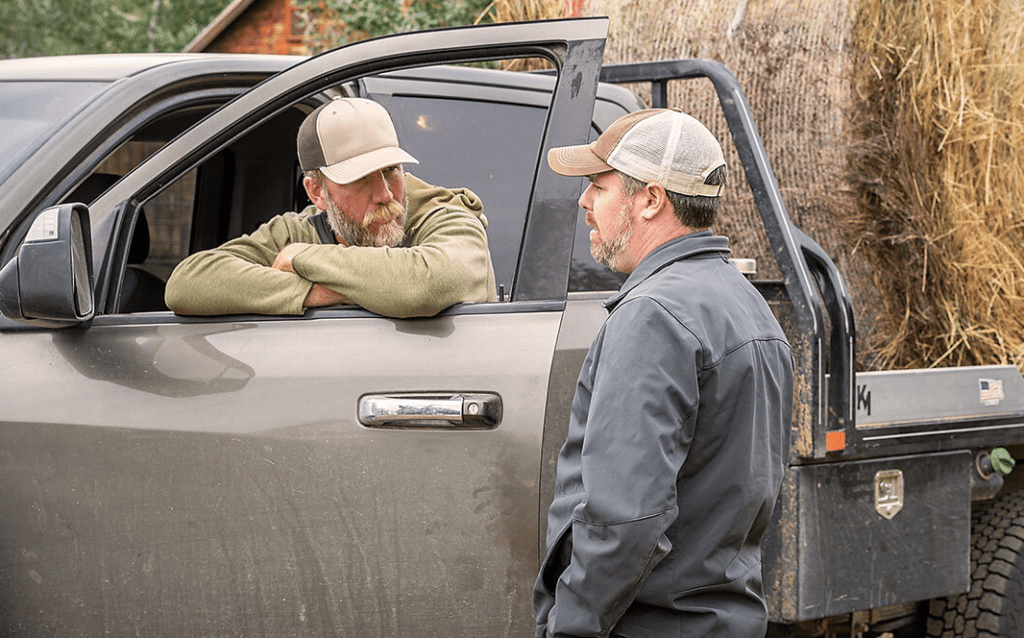Factors Causing Calving Difficulty
Every year a significant number of calves are lost at birth due to complications of parturition (calving). The most common factor in loss due to dystocia is time delay of delivery leading to lack of oxygen to the calf. Complications due to traumatic injury during manipulation and delivery can be a factor in mortality as well. While anatomical abnormalities (birth defects and fetal monsters) do occur, they tend to be rare. Factors contributing to calving problems fall into three main categories – calf effects, cow effects and fetal position at birth.
Calf Effects. Heavy birth weights account for most of the problems related to the calf. Birth weights are influenced by breed of the parents, individual genetic differences of the parents, bull selection for suitable birth weight, sex of the calf, age of the cow, and to a slight degree, nutrition of the cow. Shape of the calf, particularly head and shoulder confirmation, may also play a role in difficult deliveries.
Cow Effects. Several factors associated with the cow can contribute to increased dystocia rates, some of those include cow age, pelvic size and maturity, and cow or heifer nutrition.
Pelvic area (birth canal) increases as the heifer develops skeletal maturity. As a result, a higher proportion of calving difficulty in 2- or 3-year-old cows can be seen due to smaller pelvic openings. Heifers and cows with small pelvic areas are more likely to require assistance at calving. Consistent issues with dystocia due to pelvic size may indicate a need to adjust heifer selection criteria in the herd. Pelvic measurements can be implemented in replacement candidates to help select away from abnormally small individuals.
Increased rates of dystocia are commonly seen in herds where cows and/or heifers are thinner than the ideal at calving time. Cows that are thin tend to become physically exhausted more rapidly during the calving process, leading to delayed delivery and the need for assisted delivery. These cows also recover from calving more slowly and are highly prone to having weak calves that lack vigor. Cows should be in a body condition score (BCS) of around 5 at calving and heifers should calve in a BCS of 5.5-6, ideally. The other nutritional extreme, overly fat heifers and cows, can result in dystocia due to increased pelvic fat, decreasing the size of the birth canal.
Estimates indicate roughly 5 percent of the calves at birth are in abnormal positions, such as foreleg or head turned back, breech, backwards, transverse (sidewise), or upside down. This requires the assistance of a veterinarian or an experienced herdsman to position the fetus correctly prior to delivery. If fetal position cannot be corrected in a timely manner, the veterinarian may have to perform a caesarean section for the best outcome for the cow and calf.
Calving facilities vary widely among cow-calf operations. The ideal facilities allow for easy handling of females in labor and decreased risk of injury to either the cow or calf, as well as the operator. This includes having ease of entry and exit to the facility. A self-closing head gate is often preferred. Vertical restraint bars on the head catch are necessary to prevent choking of the cow should she lay down during delivery (catches that narrow at the bottom, such as scissors-style, are highly dangerous). Long, swinging panels approximately 12 feet in length attached at the sides of the head gate can be used as an alleyway, and then swung out of the area to allow plenty of room during the delivery process. All latching mechanisms should be secure and in good working order. They should be easily releasable in the event of an emergency. A generous amount of room behind the cow is imperative, ideally room for two people to work comfortably with room to use a calf jack safely (10-12 feet is ideal). A good light source is important, and ideally, a convenient heat source to warm chilled calves should be included in calving facilities.
Suggested equipment and supplies for calving season.
- Disinfectant
- Bucket/water
- Lubricant (Water based, gallon quantities)
- Plastic obstetrical sleeves
- 60-inch obstetrical chains/straps
- 2 30-inch obstetrical chains/straps
- 2 obstetrical handles
- Iodine or similar product for navals
- Esophageal (Tube) feeder
- Clean/dry towels or blankets
- Syringes and appropriate needles
- Pharmaceuticals as prescribed by your veterinarian with protocols for use and withdrawal times.
Some Recommendations for Calving Management
- Have the proper equipment and facilities available and in clean working order prior to calving.
- Have a conversation with your veterinarian prior to the start of calving. Know the procedures for contacting them in the event of an emergency and be aware of how they prefer to proceed in the event of an emergency. Be prepared to transport a cow in need of assistance if necessary during busy times of the calving season to achieve timely care for the cow and calf.
- Observe the herd closely during calving season, especially first-calf heifers, as they are the group most likely to require assistance. A calving cow or heifer should show consistent forward progress (“progress every ½ hour”). Lack of progress warrants an exam.
- Correct any abnormal fetal positions in the early stages of delivery. A good rule of thumb is to be able to correct positioning and deliver the calf in a 20-30-minute window, inability to do so is a good indicator that a call for assistance is probably warranted.
- Give assistance during delivery or call a veterinarian when needed. Do not wait more than two to three hours after labor begins to act. Early intervention is the key component to a healthy cow and a live, vigorous calf.
- When pulling a calf, loop the chain or rope above the fetlock and place a half hitch below the fetlock joint. If you are not familiar with placement, ask your veterinarian to demonstrate and help you practice placement. Correct placement of chains and straps will avoid causing broken legs during traction.
- Apply gentle traction on one leg at a time to facilitate passage of the shoulders through the birth canal. Do not apply excessive traction, a good rule of thumb is force of two people pulling by hand should result in progress. Most calf jacks can apply significantly more force than this, so they are a tool that should be used with caution.
- Remove mucus from the calf’s nose and mouth immediately after birth. Gasping reflex can be initiated by using a straw to tickle the inside of the nose. Vigorous stimulation by rubbing the calf’s chest, head and neck can revive a slow calf. Set the calf sternal with back legs pulled forward towards the shoulders. NEVER hang a stressed calf over a gate or swing it by the back legs. This severely limits the calf’s ability to expand his lungs and oxygenate.
- Disinfect the navel cord with iodine to prevent infection. Make sure the calf nurses within an hour after birth or give colostrum to weak calves.
- Keep birth weight and ease-of-calving records to identify the sires and dams responsible for calving problems.
For more information, go to beef.unl.edu or NebGuide “Assisting the Beef Cow at Calving Time” EC 1907.









